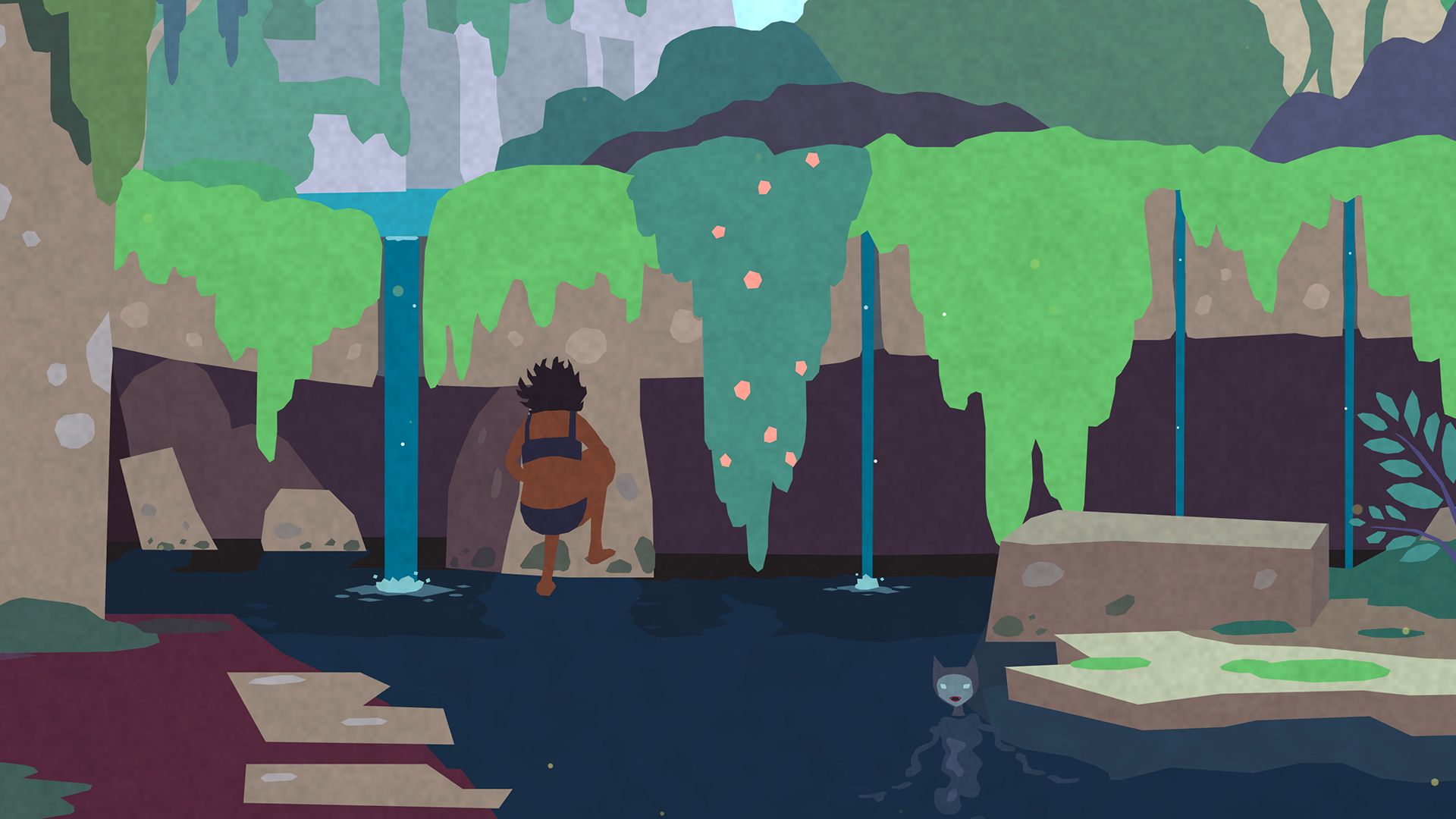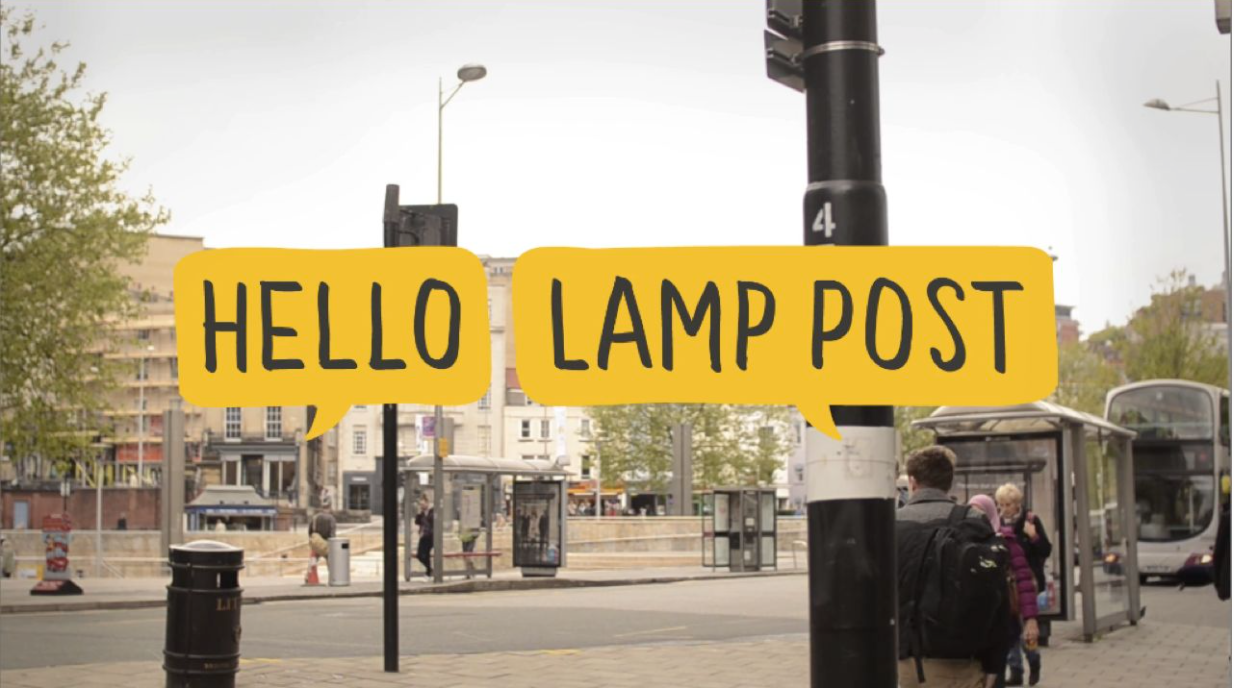
#Craft: Games Aren’t Special, and That’s Okay.
This is the fourth post in Hannah Nicklin's #Craft series. In this series of posts Storyteller and Studio Lead Hannah Nicklin will be touching on elements of the craft of storytelling in games.
This particular post is a transcript of a talk and practical provocation she gave in Copenhagen shortly after moving to the city, to Nordic Game Jam attendees, in 2019.
Did you ever hear some explain that games are the ‘medium of the future’? Or that ‘Games can do something that no other art form can do?’ and just feel a little bit… uneasy? Then this post is here for you!
I’m going to be a little provocative here, but hopefully you’ll come with me, which isn’t to argue that games can’t be special, but that they aren’t inherently so.
Games-exceptionalism - as I’m going to term it - is a totally understandable position, but not a healthy one. The idea that games are special, games alone are the medium for the future, or for now, or that games express things no other form can express.
A lot of this comes from the understandable need to stake a space out for games as part of the spectrum of culture. We haven’t always been taken seriously. That’s partly because of the heritage of video games drawing from technological disciplines as well as artistic ones – the art world doesn’t know how to treat us, we don’t all train alongside them, or practice in the same sphere -- and it’s also partly because of the snobbery of some of the art world around ‘play’ (which is obviously ridiculous, theatre, for example, is play. Theatre - as a formalisation of play - is as old as Aristotle, a game so old we forgot it was a game).
Because of this and other reasons, the world has been resistant to seeing games as part of ‘culture’, and games have often responded by justifying our belonging by explaining that we alone can address the modern moment.
Here are some headlines and ideas that I picked up on using a quick Google.
- Games are uniquely immersive
- Video games are the only ‘total’ art form (nobody tell Wagner).
- Games are uniquely capable of empathy.
- Games are uniquely interactive.
- Video games are a uniquely young medium
- Video games are the medium for our era.
- Games are unique in how they deal in agency.
- Games are unique in duration (mobile, or 40 hour+ - when some performance art lasts years, and books are… extremely mobile)
VIDEO GAMES ARE NOT SPECIAL, THEY’RE NOT UNIQUE, AND THAT’S OKAY.
If a student were to express this kind of idea to me, I would encourage them to explore how this is lazy thinking. It shows lack of knowledge of all of the myriad ways of telling stories and constructing experiences - all of which we could and should be learning from!
For example, if you believe that if you tell a story in a game it is automatically immersive, you are failing to understand video games as a material. You have to make it immersive, it is not naturally so. You may make choices which break immersion, if you believe the very medium is built on it.
I have a friend Tom Armitage who talks really brilliantly about Technology as a Material. ‘Some of these things are not like the others’ is a transcript of a really great talk he gives on the subject, and the making of the Playable City playful installation work "Hello Lamppost".

What I’m proposing when I talk about understanding the quality of games as a medium is quite similar to how he talks about technology: I’m asking that we look at video games like they are a lump of clay, or a piece of wood; immersion, interaction, empathy, totality, agency; these things are not inherent qualities of games alone, but possibilities.
‘Affordances’. Like the grain of a piece of wood, or the malleability of a particular kind of clay, you can work with them, or against them. But assuming that they are inherent will make you think you can work the wood in any direction and get the same result. You won’t, you’ll most likely end up with a weak and splintered thing.
Not only do other art forms exhibit agency, interactivity, totality, immersion, the exercise of empathy, but in reflecting on how other media explore them, we can better understand the material we work with. We might even discover a form better suited to what we want to say, or collaborators who can better help us get there.
In fighting this impulse to make bold claims about video games as entertainment or art, we can gather fresh influences, new thoughts, and build on the centuries of work that has already been done around these questions.
In walking away from the idea of inherent qualities, we can ask ourselves, what story or experience is best expressed through these mechanics, tools, or constraints, OR, what mechanics, tools or constraints are best suited to exploring this story or feeling we’re interested in?
Let’s think through an example. Let’s take one of the things that video games like to say they are uniquely good at, and explore how other forms tackle that affordance, and what we can learn from them.
‘Empathy’.
Which I would define as the understanding from you, that others are just as real, just as full of joy, intelligence, laughter and pain, just as deserving of complicated thinking as you are.
I don’t think games are particularly good at empathy. Games are in fact very often very bad at empathy. Or rather; simplistic about it. So-called empathy games can often be games which aim to change the player in a particular way; the right answer is obvious, and the intent of the designer is too. Don’t get me wrong, there’s a lot of other art forms that do art aimed at changing people’s minds, and the problem is also often the same: a lack of understanding of what empathy is and how it is a practice and not an outcome. A thing you do, not a thing you achieve.
There is rarely a clear ‘right’ solution to most ethical situations, and the idea that there is, is often what maintains structural oppressions. The assumption that telling a story in first person is equivalent to empathy - misunderstands that empathy is not a product, but a process, and not about understanding the personal experience of oppression, but in trusting the accounts and worth of people who aren’t you. Empathy is a first person act about a third person experience.
I want to talk for a moment about the artist group Blast Theory. They’ve been making work since 1991, including work in the medium of video games and technology, but also theatre and performance and installation art. One of their most recent works was Operation Black Antler. Here’s a quote about that work:
In Blast Theory’s Operation Black Antler, participants are asked to infiltrate a protest meeting at a local pub, you’re put in the position of a police officer going deep undercover, ... The work was inspired by the story of Bob Lambert, an undercover police officer who ended up fathering a child with one of the members of the campaigning groups he was targeting.
Operation Black Antler starts in a police briefing room, where you’re teamed up with strangers, asked to develop a cover story, and to invent your characters’ attitudes to subjects like immigration, welfare, and nationalism. […] Then you go the pub and have to start to engaging strangers in conversations.
The scandal that prompted the work was actually undercover cops disguising themselves as activists on the radical left, and the manipulation and effectively non-consensual relationships they had while undercover, including fathering children.
Most of the audience for Blast Theory’s work would probably consider themselves as centrist or left-of-centre. So they set you as undercover cop in a fascist meeting. You are trying to root out fascists, which is good and necessary work. But you have to act like a fascist to do so, raising a whole host of issues around consent, entrapment, surveillance, and the role of the state. It doesn’t tell the direct story of the events it wants to discuss, instead it re-situates it in a way that makes it ethically harder for the audience to perform.
The work also has problems which some reviewers have written about; If you come to the work and you are the kind of marginalised person whom the fascist group might target, or for whom cops are a part of your own structural oppression, the suspension of disbelief is a much bigger leap, maybe a leap too far.

Blast Theory’s work always involves care and reflection space afterwards as a way to try and support this kind of difficulty. The pub is full of performers tasked with a duty of care, as well as participants who are able leave at any time. And they always build reflection into their work – spaces to talk afterwards, to reconcile your actions, to examine your feelings, how your actions affect others.
But people of colour who I know have experienced this show have been dissatisfied with it.
What this tells me is that role play is easy for people whose identities are worn lightly. For those who are always othered by their identity, for whom ownership over it is always hard-won, it’s not so easy to play with. Blast Theory have made some assumptions about their audience which are insufficient. It’s worth remembering that players are a part of what your materials need to interact with too.
Empathy isn’t about pretending to be someone else, it’s about your willingness to reflect on the space between being you and being someone else. It’s a practice, not an outcome. Operation Black Antler doesn’t have an answer, it has a complication, that you can take away and build into your future actions, but for some that complication is inaccessible.
I’d argue that while it’s not wholly successful, it’s interesting to see how they deal with the news story through immersion, interaction, and role play. In fact I offer this imperfect example of an ‘empathy’ work in another medium as a means of the richness of learning we can do from how things fail as well as how they succeed. Blast Theory sees that empathy is a process, not a product, and it’s still meeting challenges from the ‘neutral’ player that they try and incorporate into their interactive first-person role play environment. They have made a work which only really works as intended if the player is unmarginalised by the law/police state/isn’t the target of fascists.
On the other hand, probably the clearest expression empathy I have ever seen in a work of art is Stan’s Café’s Of All The People In All The World, sometimes called The Rice Show. The Rice Show was a decidedly third-person experience, that cast me precisely as myself, in the context of others.
THE RICE SHOW

Part installation, part performance, I saw it in a huge warehouse space in Birmingham about a decade ago. As I entered the space I was given a single grain of rice. I was told that was ‘me’.
I held that grain of rice in my hand, and I entered the performance space. There, in one area, performers carefully weighed out rice from huge sacks. And spread out before us in the warehouse, over a hundred different piles of rice, each on a piece of paper, each carefully labelled.
As you walked around, clutching yourself in grain of rice form, you read the captions.
“People Who Will Die in the World Today”
“The Population of Australia”
“The World’s Refugees” was a substantial pile, it sat next to a single grain of rice labelled “Madonna”.
Marshal McLuhan, a media theorist once said ‘in the electric age we wear all mankind as our skin’. Part of the problem of a connected world is that the only way to survive the scale of it, is to numb yourself. One of the biggest struggles in the practice of empathy today, are the stereotypes and statistics we create so we can hold the world in our heads.
Stan’s Café’s Rice Show gives the statistics that we use to express our world, material weight, and then, and this is the crucial bit, contextualises it using your carefully held grain of rice. That’s you.
It works because it deals in physical space. In visible accuracy – the measuring of the rice needs to be seen. It uses the affordance of your presence to draw a line between you and the statistics of the world, using rice.
I don’t think I’ve played a video game ever that is better at using interaction, immersion and role-play to explore empathy than the Rice Show.
Although I’m not saying it’s impossible! What I’m saying is that we need to use the qualities of the space we’re working with in a conscious and deliberate manner.
WHAT ABOUT GAMES THOUGH?
If we’re continuing down this pathway of not assuming games are good at empathy, but actually trying to understand what we mean by the practice of empathy, and how different forms of art and culture can grapple with it, then I think an excellent example to turn to is Bury Me My Love.
Bury Me My Love is not perfect, but in using the form of whatsapp-style messaging, it directly uses the space of messaging apps, to draw a line between our conversations with loved ones, and the one happening between a Syrian woman and her husband, as she tries to leave Syria. It attempts to disrupt the media’s dehumanisation of Syrian refugees. But it’s only effective because the designers have thought carefully about the experience they’re trying to communicate, and built mechanics and narrative design that create a space both familiar and strange. Between you, and people like you.
Video games might be a great way to tell stories and play with certain sensations and experiences, but to do so well we need to try and understand the qualities of the tools and materials we’re working with and how they work with or against the grain of our intention. I give you these examples of non video games work which I think both fail and excel in their exploration of empathy as proof of the idea that no one form or medium is ever uniquely best at anything.
The best work builds on a foundation of the whole history of art and play and make informed choices about form, content, genre, mechanics, context and more.
So what could you do to apply this to yourselves, well, first, connect across art forms, find people on other courses, or weird events on Facebook, find the warehouse galleries and underground music scene, fashion shows and experimental performance and go to it. Work out what it’s saying and how it does it, ask yourself how it works and try and think about how it reflects on your work and interests. Mediums are not unique, but if you bring together enough influences you can make work which feels fresh and alive in new ways.
So... What?
This is all nice in theory, but how do you go about understanding the material of games, as part of your practice? Well, I thought I might offer you some kind of practical provocation to finish on: make a cover game.
I have a lateral theory about art forms; that indie games have far more in common with a garage band, or an experimental warehouse performance space, than we ever could with AAA games, Stadium tours or Broadway. (Not to denigrate either of them in themselves, this is just about methods of production, and for considering the affordances of the material you work with).
How do most bands start out? Playing covers. Understanding through practice what they like, so they can begin to understand and build on it.
So. What do you wish for the games you make? Empathy? Immersion? Escape? Elation? The telling of a particular story? A feeling? A thought? A reflex? An emotion?
Think about how a piece of film, theatre, music, fashion, sculpture, dance, art, animation has made you feel, think or connect with something similar. Or if you’re starting from nothing, think about a piece of other media that you love.
And make it a video game.
Think about how you would need to change it to work in a game. Maybe it’s just choosing something tiny about it and using it as inspiration, maybe you need to pull it apart and put it back together differently. Maybe it’s a character that you explore in a different way. Or you start with the soundtrack, and make something else entirely with it.
But hopefully that act will get you thinking about the qualities of creating with a material – how no one art form owns anything – and how good design in any field is brought to life through a careful and practiced understanding of intent and material.
Games aren't important, aren't exceptional, aren't revolutionary, and they aren't the medium best able to express the modern age. Understanding what games aren't inherently and exclusively, will help us make a better, more important, more exceptional, and more revolutionary game, better able to express the modern age (or whatever it is you want it to express).
